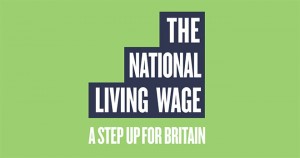Four-In-Five Young Low-Paid Social Care Workers Get Pay Rise To National Living Wage
 NLW implementation in care encouraging so far, but risks faltering if public funding not increased
NLW implementation in care encouraging so far, but risks faltering if public funding not increased
Four in five young social care workers previously paid below the new National Living Wage (NLW) introduced this April have enjoyed a pay rise as a result of it despite no legal entitlement, according to a new report published today (Tuesday) by the independent think tank Resolution Foundation. The report provides the first detailed evidence of how a sector has implemented the NLW and provides an indication of how young people across the economy may have benefited despite the policy’s focus on older workers.
Social care employers have overwhelmingly passed on the benefit of the new rate for the over-24s to younger workers, with 83 per cent of young workers previously paid below it seeing their hourly pay increased to or beyond £7.20.
There were also wider ‘knock-on’ benefits of the NLW in the social care sector beyond the lowest paid. Looking at pay improvements during April-July 2016 across the workforce as a whole providers invested more than twice as much in raising pay than if they had only satisfied NLW requirements and nothing more. Though some of this will be due to normal pay uprating, this signals the ‘spillover’ effects from the NLW that the Resolution Foundation and the Office for Budget Responsibility predicted.
Despite the big pay boost, the report finds no evidence to suggest that employers have handled the wage increase by cutting workers’ shifts. Average hours for social care workers previously paid below the NLW have risen very slightly since its introduction (by 1.1 per cent), slightly faster than the increase for higher-paid workers (0.5 per cent).
While there are many encouraging signs in the care sector’s approach to NLW implementation, the Foundation highlights increased ‘bunching’ of pay in social care at the legal wage floor as a cause for concern. Despite the evidence of ‘spillover’ benefits, one third of the care workforce is now paid the top adult rate of £7.20, up from one quarter when the top adult NMW rate was £6.50.
This bunching means limited opportunities to progress within the sector, and increases the risk of non-compliance when time not covered by contracted pay rates (for example, when travelling between clients) but legally covered by the minimum wage is accounted for.
With the extra cost of the NLW in social care set to reach £2.3 billion by 2020, the ability of the sector to continue to spread the benefits in the way it has so far will be limited, even accounting for new Council Tax-raising powers (known as the social care precept).
The Foundation says that the solution should not be to row back on the policy. Rather, it calls on the government to ensure that there are sufficient funds for providers to continue to implement the NLW without adverse consequences for workers; to recruit and retain the staff needed to meet the demands of an ageing population; and to allow for progression opportunities.
Previous Resolution Foundation analysis identified social care as one of the sectors that will be most affected by the NLW, alongside retail, hospitality and administration. The findings published today – which mark the first detailed assessment of the impact of the NLW on individual workers – therefore give an initial indication of how this ambitious but welcome policy is affecting the UK’s labour market.
This analysis is part of a broader first look at the impact of the NLW’s introduction across the economy in the Resolution Foundations annual Low Pay Britain report which wil be published in September.
Laura Gardiner, Senior Research and Policy Analyst at the Resolution Foundation, said:
“It is great news that the National Living Wage has had a large positive impact on pay in social care, giving hundreds of thousands of frontline care workers a pay rise, with no evidence of hours being cut to foot the bill.
“It is encouraging that younger workers have also benefited from the new 25-and-over rate, despite having no legal entitlement to the National Living Wage. In fact, across the age range social care employers are clearly doing much more than the bare minimum where pay is concerned, with the average pay rise double what it would have been had bosses just increased pay to the legal wage floor.
“As the NLW continues to rise to its target value by 2020 we risk reaching a ‘crunch point’ where a lack of funding leaves the care sector unable to continue to spread the benefits of the NLW. Our ageing population combined with the prospects of reduced inward migration post-Brexit make it essential that more public funding is available for care providers to attract and retain the care workforce we need.”






